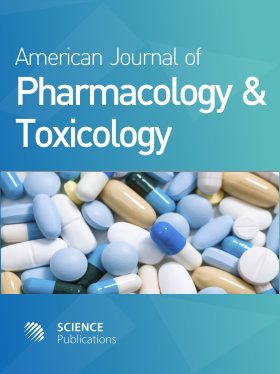Uncommon Toxicologic Profile at Toxic Doses of CPI-613 (an Agent Selectively Alters Tumor Energy Metabolism) in Rats and Minipigs Reflects Novel Mechanism
- 1 Quinnipiac University, United States
Abstract
Problem statement: CPI-613 is a novel anticancer agent and the toxicological profile has not been assessed. Accordingly, the objective of these studies was to thoroughly evaluate the Toxicokinetic (TK) effects of CPI-613 in rats and to compare the toxicological profile of rats to minipigs to determine if there were differences between the two animal species. Approach: These studies involved assessments of multiple toxicological parameters (including clinical signs as well as full panel blood work, necropsy and histology) at multiple times in animals treated with the threshold dose (i.e., a dose that did not induce significant effects), toxic dose (i.e., a dose that induced significant toxic effects) and dose that approximated the LD10 dose (i.e., a dose that induced death in approximately 10% of the animals). CPI-613 was given intravenously 2x weekly for 3 weeks, a dosing schedule that is used in clinical trials of CPI-613. CPI-613-treated animals were compared to absolute control treatment as well as vehicle treatment. Furthermore, the correlations among toxic effects of CPI-613, plasma concentrations and Pharmacokinetics (PK) of CPI-613 were evaluated to establish the TK effects of CPI-613. Results: The results demonstrated the uncommon toxicological profile at toxic doses of CPI-613, which were related to induction of inflammation as the primary and the only toxicological effects in both animal species. The induction of inflammation was consistent with the dose-related increases in plasma CPI-613. Other changes such as elevations in reticulocytes and Gamma-Glutamyl Transferase (GGT) were also observed, but they might be secondary to the inflammatory effects of CPI-613. The toxic doses of CPI-613 were ~60x the anti-tumor dose levels observed in mouse tumor xenograft models, suggesting a wide safety margin of CPI-613. Conclusion: CPI-613 had an uncommon toxicological profile (induction of inflammation) in both animal species, which reflects its novel mechanism of action.
DOI: https://doi.org/10.3844/ajptsp.2010.183.208

- 7,903 Views
- 5,962 Downloads
- 6 Citations
Download
Keywords
- Gamma-Glutamyl Transferase (GGT)
- toxicological profile
- animal species
- oxidative phosphorylation
- anti-cancer agents
- tumor mitochondria
- metabolic syndrome
- systematic evaluation
- hypoxic microenvironments
- necrosis and autophagia
- clinical pathology
